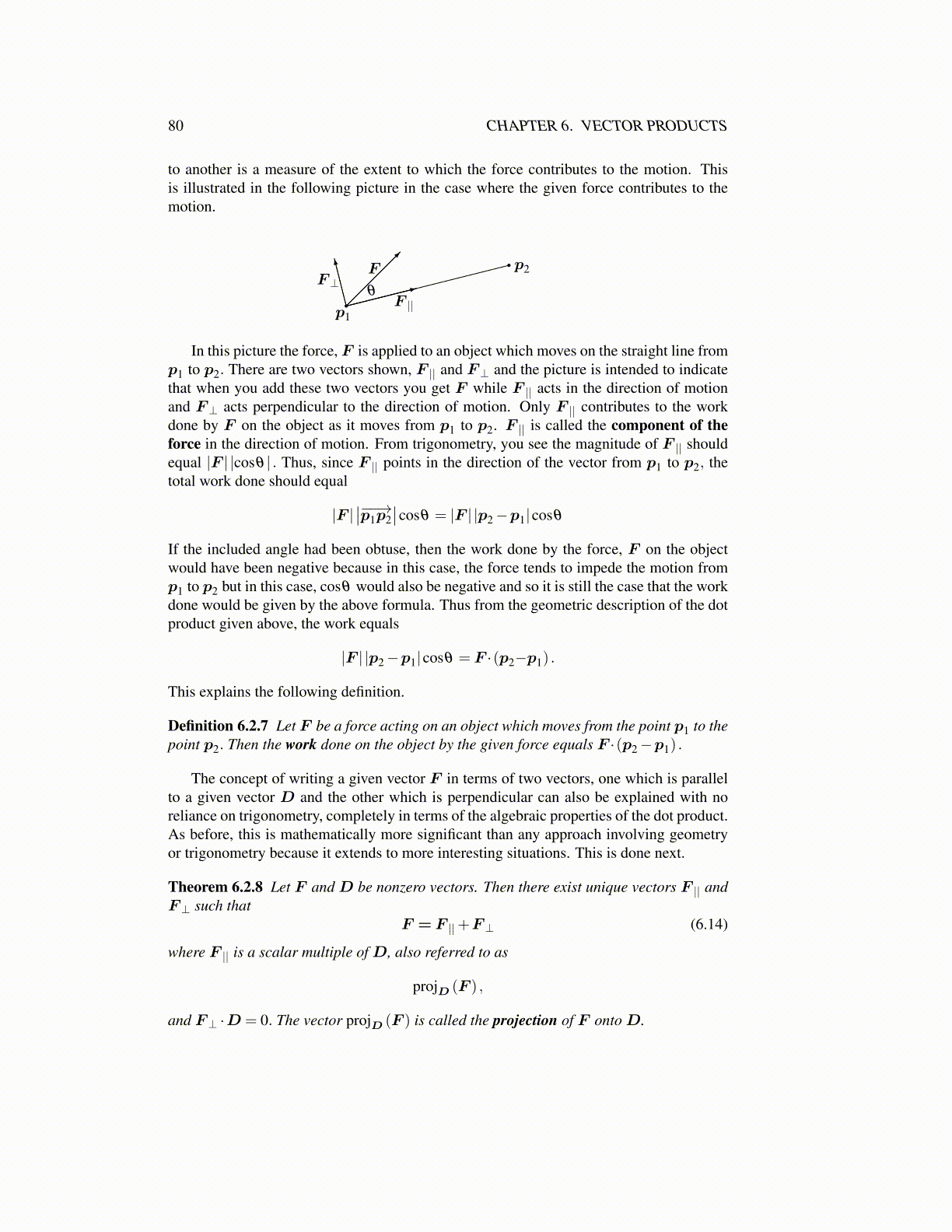
80 CHAPTER 6. VECTOR PRODUCTS
to another is a measure of the extent to which the force contributes to the motion. Thisis illustrated in the following picture in the case where the given force contributes to themotion.
F
F ||
F⊥p2
p1
θ
In this picture the force, F is applied to an object which moves on the straight line fromp1 to p2. There are two vectors shown, F || and F⊥ and the picture is intended to indicatethat when you add these two vectors you get F while F || acts in the direction of motionand F⊥ acts perpendicular to the direction of motion. Only F || contributes to the workdone by F on the object as it moves from p1 to p2. F || is called the component of theforce in the direction of motion. From trigonometry, you see the magnitude of F || shouldequal |F | |cosθ | . Thus, since F || points in the direction of the vector from p1 to p2, thetotal work done should equal
|F |∣∣−−→p1p2
∣∣cosθ = |F | |p2−p1|cosθ
If the included angle had been obtuse, then the work done by the force, F on the objectwould have been negative because in this case, the force tends to impede the motion fromp1 to p2 but in this case, cosθ would also be negative and so it is still the case that the workdone would be given by the above formula. Thus from the geometric description of the dotproduct given above, the work equals
|F | |p2−p1|cosθ = F ·(p2−p1) .
This explains the following definition.
Definition 6.2.7 Let F be a force acting on an object which moves from the point p1 to thepoint p2. Then the work done on the object by the given force equals F ·(p2−p1) .
The concept of writing a given vector F in terms of two vectors, one which is parallelto a given vector D and the other which is perpendicular can also be explained with noreliance on trigonometry, completely in terms of the algebraic properties of the dot product.As before, this is mathematically more significant than any approach involving geometryor trigonometry because it extends to more interesting situations. This is done next.
Theorem 6.2.8 Let F and D be nonzero vectors. Then there exist unique vectors F || andF⊥ such that
F = F ||+F⊥ (6.14)
where F || is a scalar multiple of D, also referred to as
projD (F ) ,
and F⊥ ·D = 0. The vector projD (F ) is called the projection of F onto D.